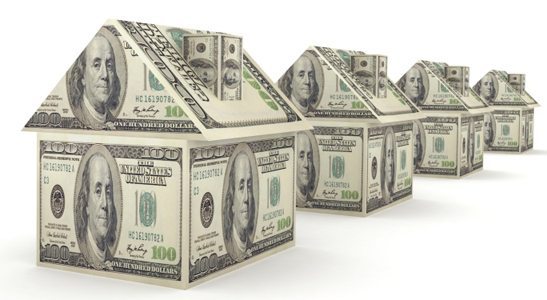The big home-price rebound in the Phoenix area may officially be over. For the first time since last summer, the market experienced a month-to-month decrease in the median single-family-home sales price. A new report from the W. P. Carey School of Business at Arizona State University reveals that and other details about Maricopa and Pinal counties, as of January:
> The median single-family-home sales price was $196,900.
> Demand is very low, from both investors and normal homeowner-occupiers.
> Phoenix-area home prices are finally back in line with the Consumer Price Index, as if the recession and recovery had never happened.
Valley home prices started quickly rising after hitting a low point in September 2011, but they began slowing down this past July. Finally, this January, the median single-family-home sales price hit $196,900 — down 4 percent from December. It was the first month-to-month drop since the normal summer seasonal blips, and it’s largely due to a big drop in demand/sales activity.
“January is usually the quietest month of the year for sales, but this January was far weaker than January 2012 and 2013,” says the report’s author, Mike Orr, director of the Center for Real Estate Theory and Practice at the W. P. Carey School of Business. “Despite the huge price increases between January 2013 and 2014, the total dollars spent on homes here this January actually dropped by 7 percent. This is the second lowest level of demand we’ve seen in 14 years, behind only 2008.”
Still, the median single-family-home sales price remained up 21 percent from last January, when it was at $163,000. Realtors will note the average price per square foot was up 19 percent. The median townhouse/condo price was up about 17 percent.
“The price gains now are weak, but it’s not clear that they’ll get much weaker or stronger,” explains Orr. “We’ve already seen a significant change in the market, which has completed its rebound from the artificially low prices between 2009 and 2011. Pricing is back to the level it would have attained if it had increased from 2000 in line with the Consumer Price Index.”
Demand from both investors and ordinary owner-occupiers is way down. Even though the available supply of homes for sale was up 47 percent from Feb. 1 of last year to Feb. 1 of this year, sales activity plummeted. Sales of single-family homes were down 23 percent from last January to this January. Sales of townhomes and condos were down 18 percent.
Luxury homes are one of the only bright spots in the market, with homes above a half-million dollars representing 14 percent more of the sales transactions this January than last January. However, even the supply of luxury homes is quickly rising, so sellers in that space will face tougher competition in 2014.
Investors continue looking to other parts of the country for bigger bargains, since Phoenix prices have risen. In January, the percentage of residential properties bought by investors was down to 21.1 percent from the peak of 39.7 in July 2012.
New home sales were also down 21 percent from last January to this January, representing the steepest fall in new-home closings in several years. Millennials and those who lost their homes to foreclosure or short sale in the recession appear more interested in renting than buying. That’s led to an upward trend in multi-family construction permits. It could also lead to higher rental rates in the next two years, during which time, home sales may continue to be relatively slow.
“The market conditions suggest prices will struggle to make any further upward progress in 2014,” Orr adds. “With February through June the strongest part of the year, we may yet see a little forward movement, but it’s likely to be tentative at best. The real test will come in the second half of the year, which is likely to see lower prices unless demand takes a distinct turn for the better.”
Foreclosure levels remain below the normal, historic trends for Maricopa and Pinal counties. Foreclosure starts – owners receiving notice their lenders may foreclose in 90 days – were down 55 percent from January 2013 to this January. Completed foreclosures were down 54 percent.
Orr’s full report, including statistics, charts and a breakdown by different areas of the Valley, can be viewed and downloaded at www.wpcarey.asu.edu/realtyreports. A podcast with more analysis from Orr is also available from knowWPCarey, the business school’s online resource and newsletter, at http://knowwpcarey.com/index.cfm?cid=13.



